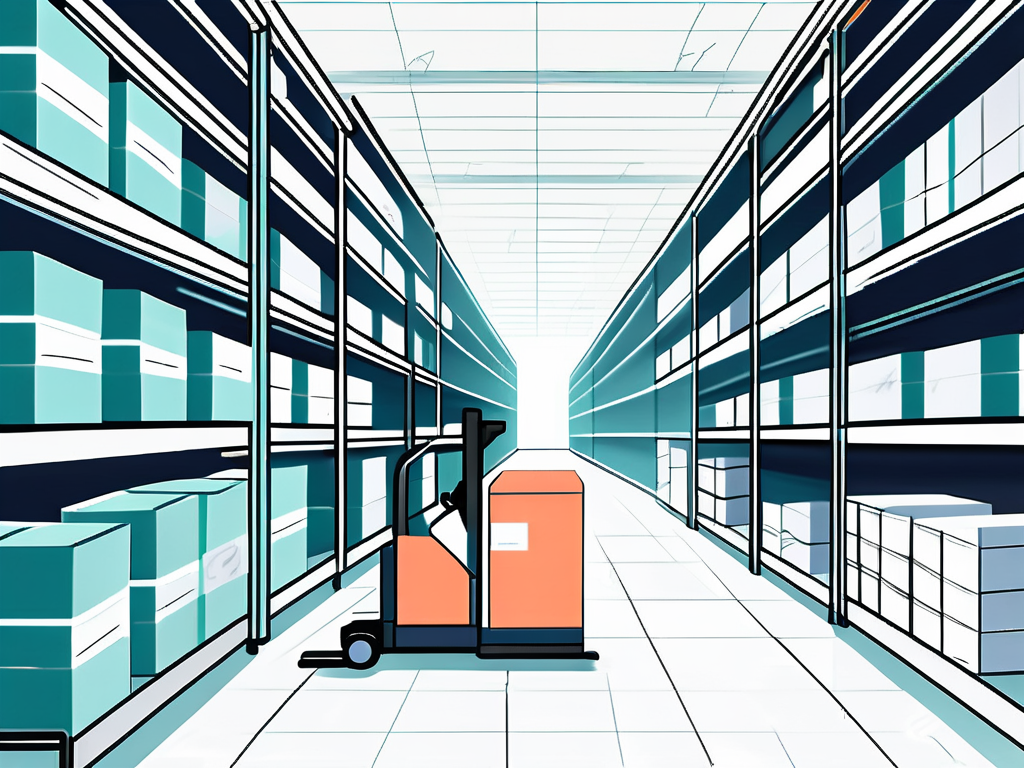Pharmaceutical warehouse management is a critical aspect of running a successful pharmaceutical business. Efficient warehouse management systems play a crucial role in ensuring smooth operations, minimizing errors, and improving overall productivity. In this article, we will explore the importance of an efficient warehouse management system in the pharmaceutical industry and discuss the key steps to building one.
Understanding the Importance of an Efficient Warehouse Management System
An efficient warehouse management system (WMS) is a software solution that helps pharmaceutical companies optimize their inventory management, order fulfillment, and overall warehouse operations. It enables businesses to streamline their processes, reduce costs, and meet customer demands more effectively. Let’s delve into the role of a WMS in the pharmaceutical industry.
The Role of a Warehouse Management System in the Pharmaceutical Industry
In the highly regulated pharmaceutical industry, accurate inventory tracking is essential to comply with stringent regulatory requirements. A warehouse management system ensures product traceability, minimizing the risk of product recalls and ensuring patient safety. It also facilitates efficient lot tracking and expiration date management, helping companies maintain product integrity and prevent stockouts.
Moreover, a WMS plays a crucial role in maintaining the quality and efficacy of pharmaceutical products. It helps companies adhere to Good Manufacturing Practices (GMP) by providing real-time monitoring of temperature and humidity levels in the warehouse. This ensures that sensitive products, such as vaccines and biologics, are stored under optimal conditions, preserving their potency and effectiveness.
Furthermore, a well-implemented WMS can contribute to the reduction of medication errors. By automating picking and packing processes, the system minimizes the risk of human error, ensuring that the right medication is delivered to the right patient. This not only improves patient safety but also enhances the reputation of pharmaceutical companies by demonstrating their commitment to quality and accuracy.
Additionally, a WMS enhances operational efficiency by automating various processes such as receiving, putaway, picking, and shipping. It optimizes warehouse space utilization, eliminates manual errors, and reduces the time required to fulfill orders. Real-time visibility into inventory levels and order statuses enables businesses to make data-driven decisions, improve order accuracy, and respond quickly to changing customer demands.
Key Features of an Efficient Warehouse Management System
An efficient WMS offers a range of features designed specifically for the pharmaceutical industry. These features include:
- Inventory tracking and control: A WMS provides real-time visibility into stock levels, allowing companies to monitor inventory movement and ensure accurate stock counts.
- Lot tracking and expiration management: The system enables effective lot control and expiration date tracking, ensuring compliance with regulatory requirements and minimizing the risk of expired products.
- Order management: A WMS streamlines order processing, automating order fulfillment tasks such as picking, packing, and shipping. It also facilitates order prioritization and supports various order fulfillment strategies.
- Integration with other systems: An efficient WMS integrates seamlessly with other software solutions such as Enterprise Resource Planning (ERP) systems, ensuring data synchronization across the organization.
- Reporting and analytics: The system generates comprehensive reports and provides analytics for better decision-making and continuous improvement of warehouse operations.
Furthermore, an advanced WMS may offer additional features such as automated replenishment, which ensures that inventory levels are always optimized to meet demand. It may also include barcode scanning capabilities, enabling efficient and accurate product identification and tracking throughout the warehouse.
In conclusion, an efficient warehouse management system is a valuable asset for pharmaceutical companies. It not only helps them comply with regulatory requirements and maintain product integrity but also enhances operational efficiency, improves order accuracy, and supports data-driven decision-making. By investing in a robust WMS, pharmaceutical companies can optimize their warehouse operations and stay ahead in a competitive industry.
Steps to Building an Efficient Pharmaceutical Warehouse Management System
Assessing Your Current Warehouse Operations
Before building a warehouse management system, it is crucial to assess your current warehouse operations. Identify the pain points, bottlenecks, and areas for improvement. This assessment will serve as a baseline for developing a tailored solution that addresses your specific needs.
Conducting a thorough assessment involves analyzing various aspects of your warehouse operations, such as inventory management, order processing, storage layout, and staff workflows. By delving deep into these areas, you can uncover inefficiencies and opportunities for optimization. Consider utilizing data analytics tools to gather insights into your operations and identify trends that can inform your decision-making process.
Identifying Areas for Improvement
Once you have identified the areas that need improvement, prioritize them based on their impact on your operations and customer satisfaction. Common areas for improvement include inventory accuracy, order accuracy, space utilization, and warehouse labor efficiency.
In addition to these common areas, it is essential to consider the unique requirements of pharmaceutical warehousing, such as temperature control for storing sensitive medications, compliance with regulatory standards, and traceability of products throughout the supply chain. Addressing these specialized needs will ensure the integrity and safety of pharmaceutical products while enhancing operational efficiency.
Implementing Technology for Enhanced Efficiency
The next step is to evaluate and implement technology solutions that can enhance your warehouse management efficiency. Choose a WMS that aligns with your business requirements and integrates seamlessly with your existing systems. This will enable you to automate manual tasks, improve accuracy, and increase productivity.
When selecting technology solutions, consider advanced features such as RFID tracking for real-time inventory visibility, automated picking systems for faster order fulfillment, and predictive analytics for demand forecasting. By leveraging cutting-edge technology, you can stay ahead of the curve in pharmaceutical warehousing and meet the evolving needs of the industry.
Training Staff for Optimal System Use
Implementing a new warehouse management system requires proper training of your staff. Ensure that your employees receive comprehensive training on how to use the system effectively. Training should cover system functionalities, best practices, and troubleshooting techniques.
Furthermore, ongoing training and development programs are essential to keep your staff updated on the latest technology trends and industry regulations. By investing in continuous learning initiatives, you can empower your team to adapt to changing circumstances, optimize system utilization, and deliver exceptional service to your pharmaceutical customers.
Ensuring Compliance in Your Warehouse Management System
Understanding Regulatory Requirements
Compliance with regulatory requirements is paramount in the pharmaceutical industry. A robust warehouse management system should incorporate features that support compliance with regulations such as Good Distribution Practices (GDP) and serialization requirements. Stay updated with the latest regulatory changes and ensure your system meets the necessary standards.
In addition to GDP and serialization requirements, it is essential to consider other regulatory aspects that may impact your warehouse operations. This includes regulations related to storage conditions, handling of hazardous materials, and transportation guidelines. By having a comprehensive understanding of all relevant regulations, you can proactively address compliance issues and mitigate potential risks.
Incorporating Compliance Measures into Your System
To ensure compliance, implement measures such as barcode scanning for accurate product identification, serialization for traceability, and temperature monitoring for maintaining product integrity. These measures will help you meet regulatory requirements and protect your brand reputation.
Furthermore, consider implementing a robust quality management system that includes regular audits, training programs for staff, and documentation processes to ensure compliance at every level of your warehouse operations. By fostering a culture of compliance within your organization, you can create a proactive approach to regulatory adherence and demonstrate your commitment to upholding industry standards.
Maintaining and Improving Your Warehouse Management System
A warehouse management system (WMS) is a critical component of any pharmaceutical company’s operations. It helps streamline processes, increase efficiency, and ensure compliance with industry regulations. However, implementing a WMS is not a one-time task; it requires ongoing maintenance and improvement to keep up with the ever-changing landscape of the pharmaceutical industry.
Regular System Audits and Reviews
Regular system audits and reviews are essential to identify any issues and areas for improvement. Conduct periodic assessments of your warehouse management system to ensure it continues to meet your business needs and remains aligned with industry best practices. These audits can help uncover bottlenecks, inefficiencies, and potential risks that may hinder the smooth functioning of your warehouse operations.
During the audit process, consider involving key stakeholders from different departments, including warehouse managers, IT personnel, and quality assurance teams. Their insights and perspectives can provide valuable input for enhancing the system’s functionality and addressing any pain points.
Adapting to Changes in the Pharmaceutical Industry
The pharmaceutical industry is constantly evolving, with new regulations, technologies, and market trends emerging. It is crucial to stay updated with these changes and adapt your warehouse management system accordingly. Embrace new technologies, automate processes, and leverage data analytics to stay ahead of the competition.
One area where technology can significantly impact warehouse management is in the realm of inventory tracking and traceability. Implementing barcode scanning or RFID systems can help improve accuracy, reduce errors, and enhance overall inventory management. Additionally, integrating your WMS with other systems, such as enterprise resource planning (ERP) software, can provide a holistic view of your supply chain and enable better decision-making.
Continual Staff Training and Development
Invest in continual staff training and development to maximize the benefits of your warehouse management system. Provide ongoing training sessions to keep your employees up to date with new features and functionalities. Encourage a culture of continuous improvement and empower your staff to suggest enhancements to the system.
Training should not be limited to just the technical aspects of the WMS but should also focus on developing soft skills, such as problem-solving, communication, and teamwork. By equipping your employees with the necessary knowledge and skills, you can create a more efficient and productive workforce that can effectively utilize the capabilities of the WMS.
Building an efficient pharmaceutical warehouse management system requires careful planning, technological integration, and ongoing maintenance. By understanding the importance of an efficient WMS, following the steps outlined, and prioritizing compliance and continuous improvement, pharmaceutical companies can optimize their warehouse operations, improve customer satisfaction, and achieve long-term success.







